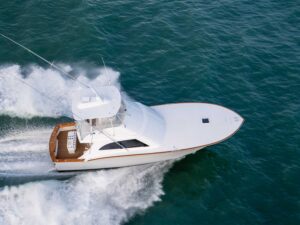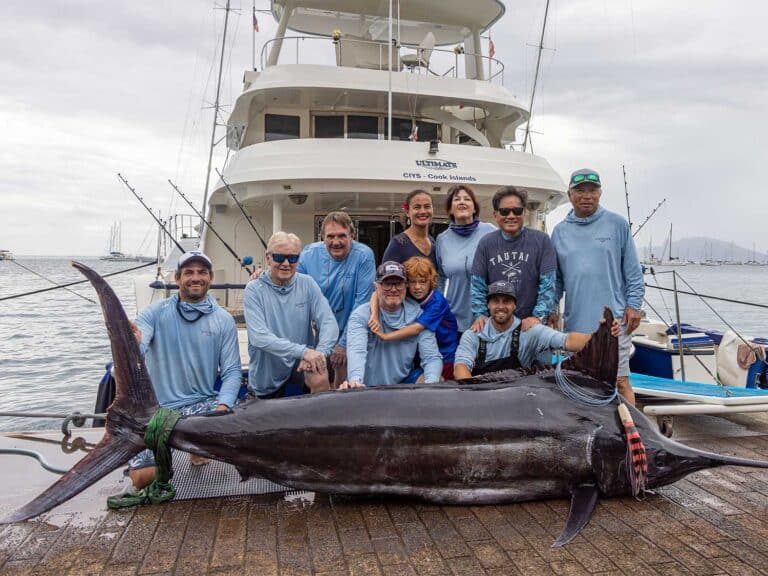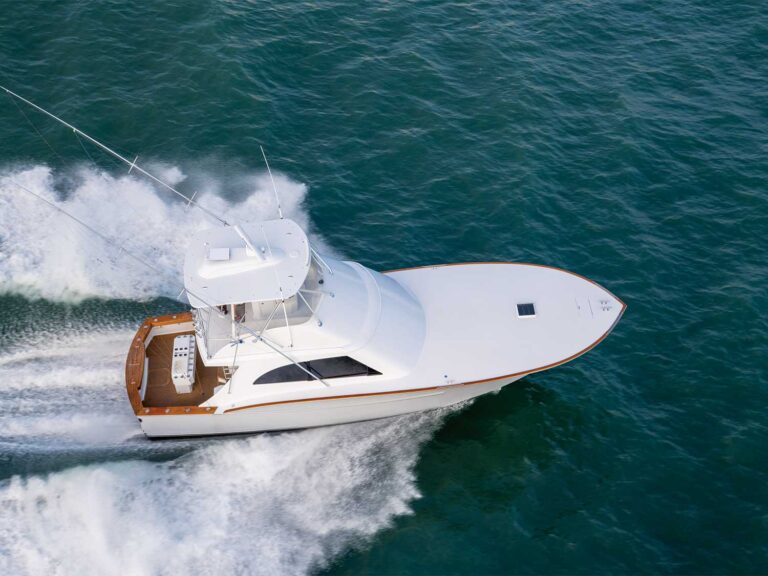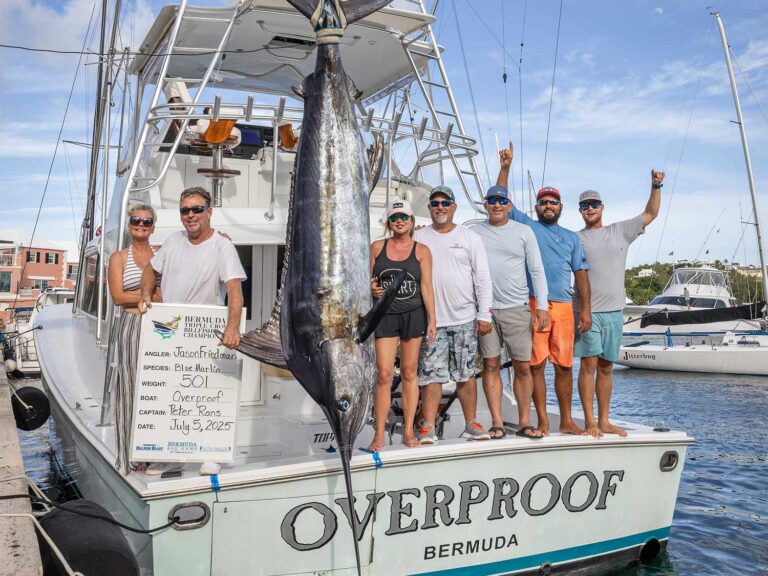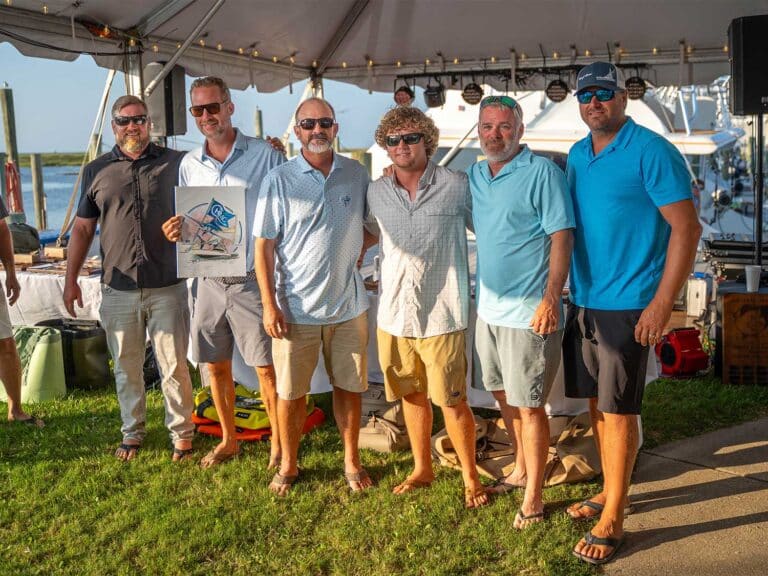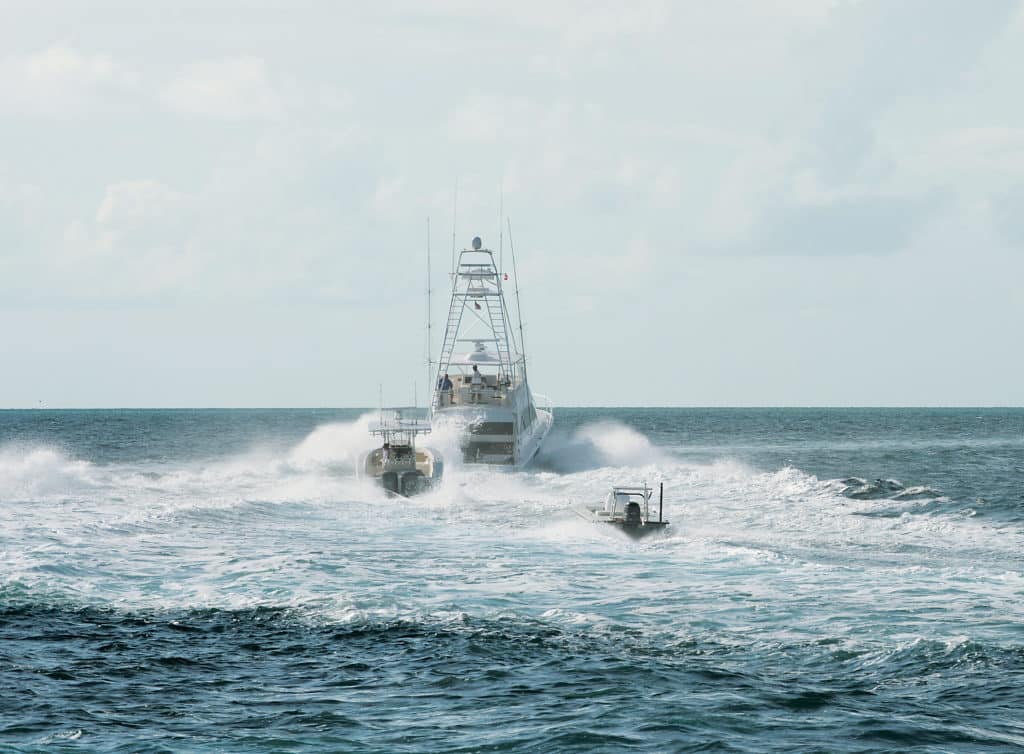
Endless Opportunities
Carrying or towing a tender has become increasingly popular. It opens up endless opportunities to explore new territory and fish expansive areas inaccessible in the big boat, allowing you to take advantage of lousy weather. With the right equipment set up correctly, having a tender or two makes every trip more fun for everyone. I’ve watched a lot of sport-fishing crews fish themselves out of jobs over the years by grinding out the offshore deepwater fishing day after day, wearing their guests out. It’s a shame, because opening up horizons that a shallow-water skiff or a center console offers, making the offbeat things available to guests, can fill up a trip and be a lot of fun. Entertainment and fun are key to longevity on the job.
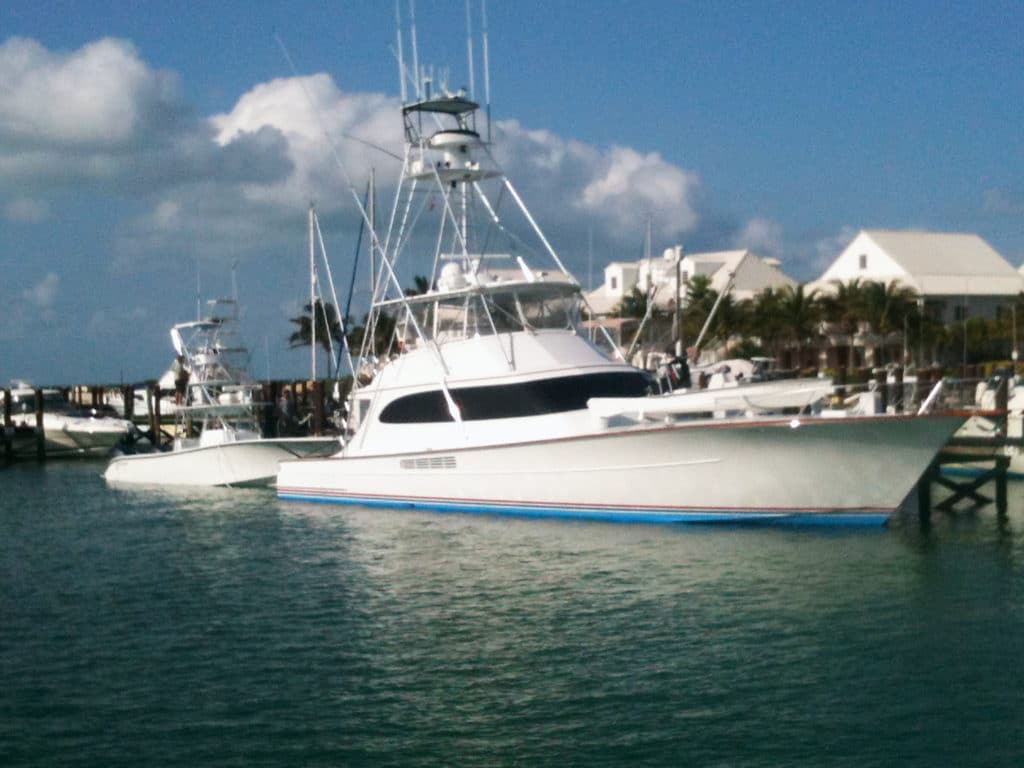
Selecting the right skiff or center console and setting it up correctly with the right gear to tow, lift or cradle it on deck makes life easier — and more likely that these tools will be used. We’ve been carrying a skiff on deck for more than 15 years, and towing a center console for nearly half of that. Having those tools has enriched our guests’ experiences, and it absolutely enhanced our fishing.
When selecting the right boat for the bow, many folks pick a rigid inflatable because it doesn’t do damage when it hits the big boat. Rubber boats are one-dimensional. They are hard to get into when snorkeling, they have no livewells for transporting bait, they have a super high profile on the bow, they don’t hold as many people or as much gear in the same footprint, and, in general, they look homely. So if your sole requirement is that you don’t do damage when you hit the big boat, you need to learn how to drive.
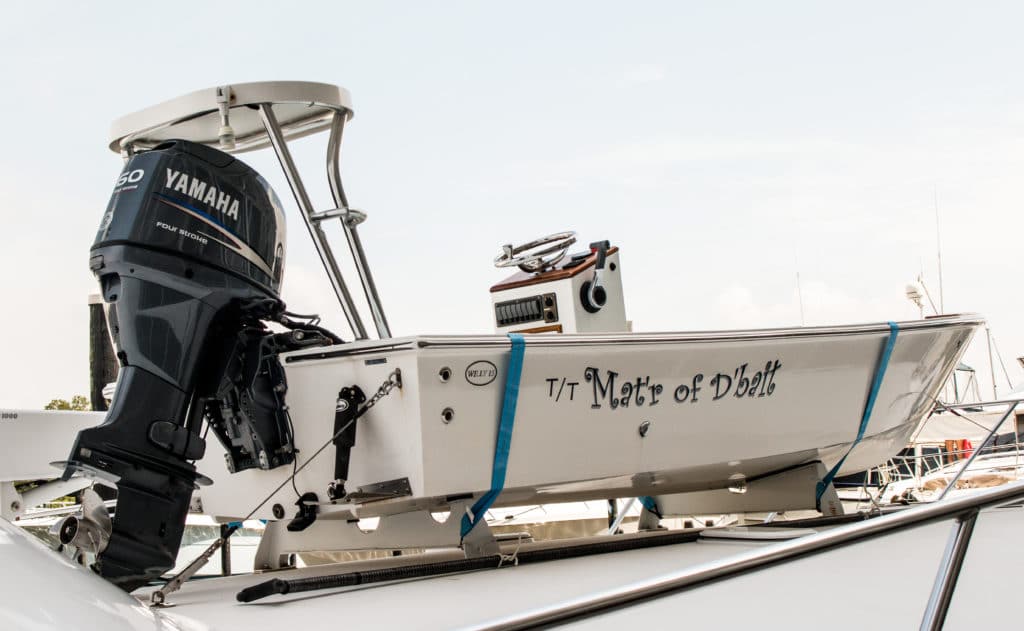
We have found that a flats skiff is most versatile. It has fishing features built in, and it has a low profile on the bow. It opens up the entire world of inshore and shallow-water fishing opportunities that are available wherever the big boat goes. The most important factor for selecting a tender of any kind is weight. If anyone says weight doesn’t matter, they really have no idea what it’s like to carry a boat on the bow.
Some manufacturers publish weights that are optimistic at best. The only way to really know what a boat weighs is to weigh it yourself. The weight is critical because it affects what size davit and cradle are needed, what gauge lifting gear is needed and how the weight on the bow will affect the big boat. The big boat’s foredeck might require a bit more structural reinforcement to support the added load as well.
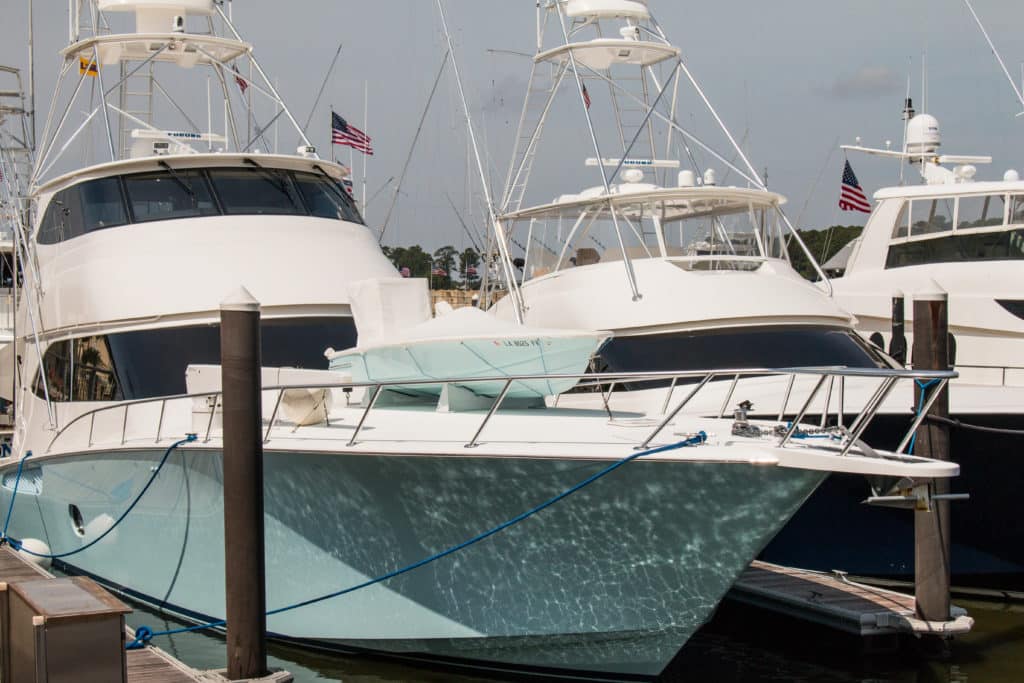
Once you’ve made your decision, mounting the boat needs to be planned and done correctly. The cradles should be form-fitting to the skiff’s hull to help reduce movement in rough seas. Flat cradles allow the boat to shift, no matter how tight your tie-downs are. This usually happens when you least need it to: when it’s rough. The cradles need to be bolted to deck plates that are through-bolted on the deck with backing plates on the underside of the foredeck. The tie-down eyebolts also need to be secured with backing plates. This requires dropping the headliner to access the ceiling of the foredeck.
We use the flush-mount deck plates so that we can remove the cradles if we take the skiff off the boat and clear the deck for an extended period. When selecting a davit, lifting capacity and where the stand pipe will fit inside the boat are the primary criteria; then it gets down to choosing self-contained or remote-mounted hydraulics, manual versus hydraulic rotation, price, and delivery dates.
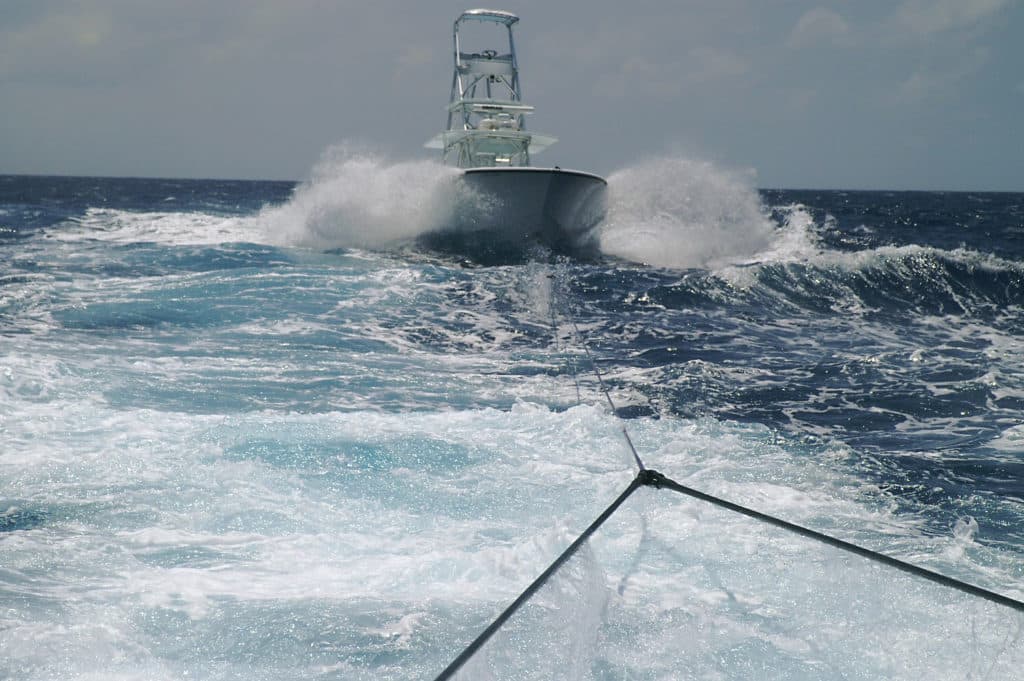
Towing a center console as a tender is a great way to keep folks entertained at your destination. A good center console offers room for several guests, as well as shade from a T-top, fish boxes, livewells, dry storage, sometimes a head, fishability, and easy in and out for diving and beaching. This is a great option for those who might not want to fish but can fill a day with sightseeing, inshore fishing, snorkeling, spearfishing, shelling — you name it. What we call “tropical tours” have saved many a trip.
Once you determine the size of the boat you would like to tow, you need to be sure you can tow it safely with the big boat. Be sure the cleats on the big boat are through-bolted with substantial backing plates to hold the stress and strain of the towed boat. Towing a boat puts many opposing forces on the big boat when it’s rough. Knowing the limitations of the big boat is key to having a trouble-free tow.
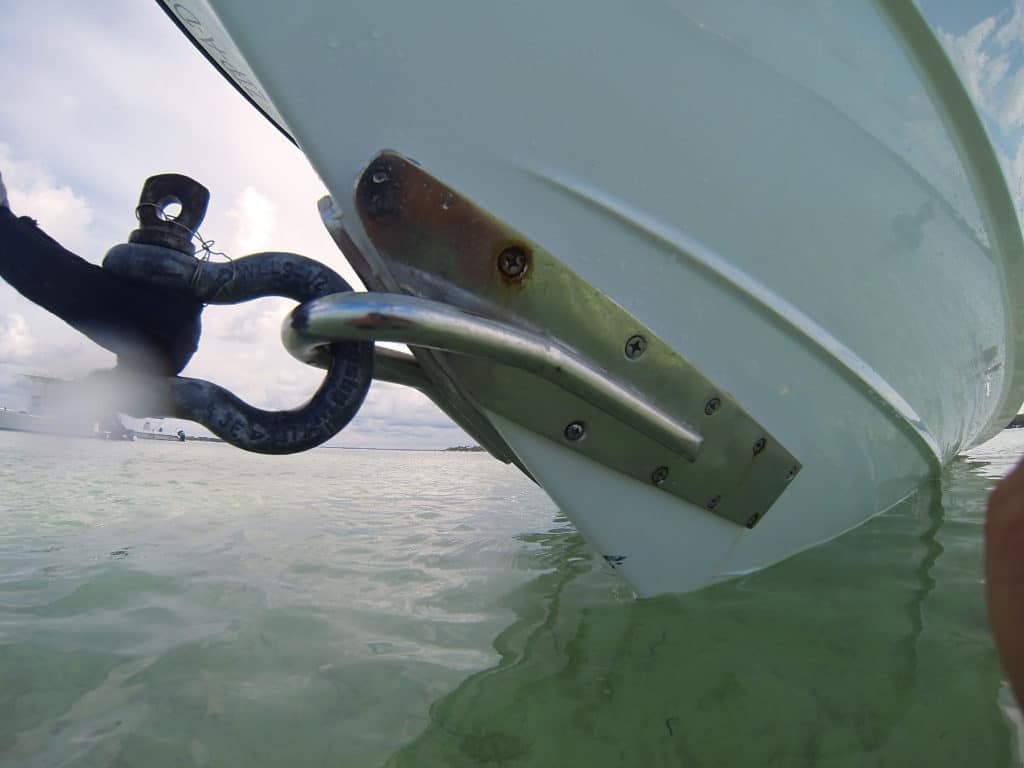
Having the proper tow eye on the boat being towed is also very important. Most tow eyes have an eye through which you put the pin of a shackle, putting all the stress of the tow on that pin. I have seen plenty of bent and mangled pins, some so badly they needed to be cut off to disconnect the shackle from the boat. We use a much better and easier on-the-tow setup with a tow bit that has a round stock stainless bar that is bent and welded to the hull plates. This bar allows the shackle from the tow line to swivel on the bar so that the pressure is equally distributed on the shackle and the tow bit when the boat digs or veers off, much like the links of a chain.
It is critical to use backing plates and through-bolts for the tow bit and be certain the stainless outer hull plates are large enough to distribute the loads across an area of the bow at or slightly above the waterline for the best tow. Having the tow bit too high can make the boat bow steer and pull hard when it needs to slide along with as little drag as possible behind the big boat.
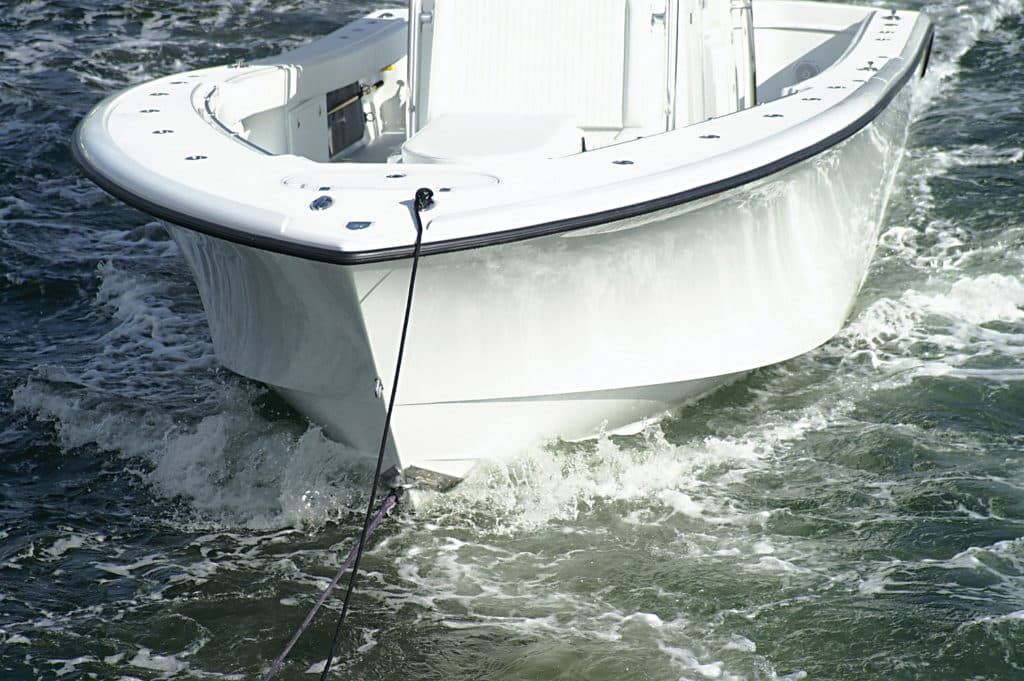
The tow line is not a piece of gear you want to skimp on. Insurance requires that if you are going to tow, you need to have your tow line surveyed annually by an accredited marine surveyor. We had our tow line made by National Marine Supply in Fort Lauderdale, Florida. For the main line, we used a 12-strand plasma line, ⅝ inch by 100 feet, with soft eyes and chafe gear sewn on both ends. This line has a tensile strength of 51,400 pounds. The plasma line reduces stretch and decreases drag. From the boat, we have a pair of 60-foot lines made of 1 ⅛-inch double-braid nylon, with a soft eye and chafe gear on one end that make a bridle to the main line with the tow boat ends whipped and left open for easier adjustment on board the tow boat.
To quickly disconnect from the tow line, we have a 12-foot piece of the ⅝-inch plasma that serves as a connecting line to the boat, with an eye and shackle at each end. We leave it connected at the waterline tow eye and undo the shackle to the main line. The painter connecting line has a 15-foot length of ½-inch black double-braid to pull in the shackle at the connecting line/main line join so it can be disconnected and easily brought to the skiff.
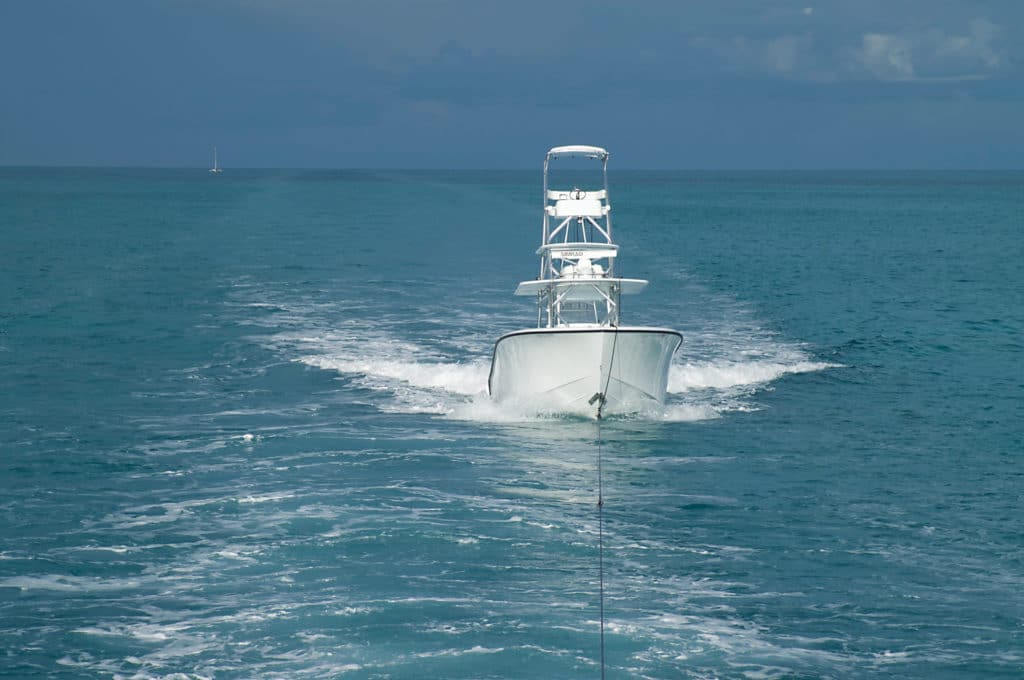
We use ⅞-inch Crosby G-209A alloy galvanized shackles because they are stronger than stainless-steel shackles, with a weight-lifting limit of 9.5 tons. We carry spare shackles and pins for each connection in case one is dropped overboard when making the transfer. The pin is secured to the shackles with Monel wire so they do not unwind and vibrate loose in transit. We use Tigerflex hose as chafe gear where our harness lines come through the transom hawse pipes to the cleats.
Having one or both tender setups will make a huge difference in your operation. The flexibility, opportunities and fun they can provide will keep your guests occupied and smiling when the fishing is slow, the weather is not cooperating or you have a big crowd with several agendas. Give it a try, and you might just find that tropical tours help you get to new and better fishing grounds.
